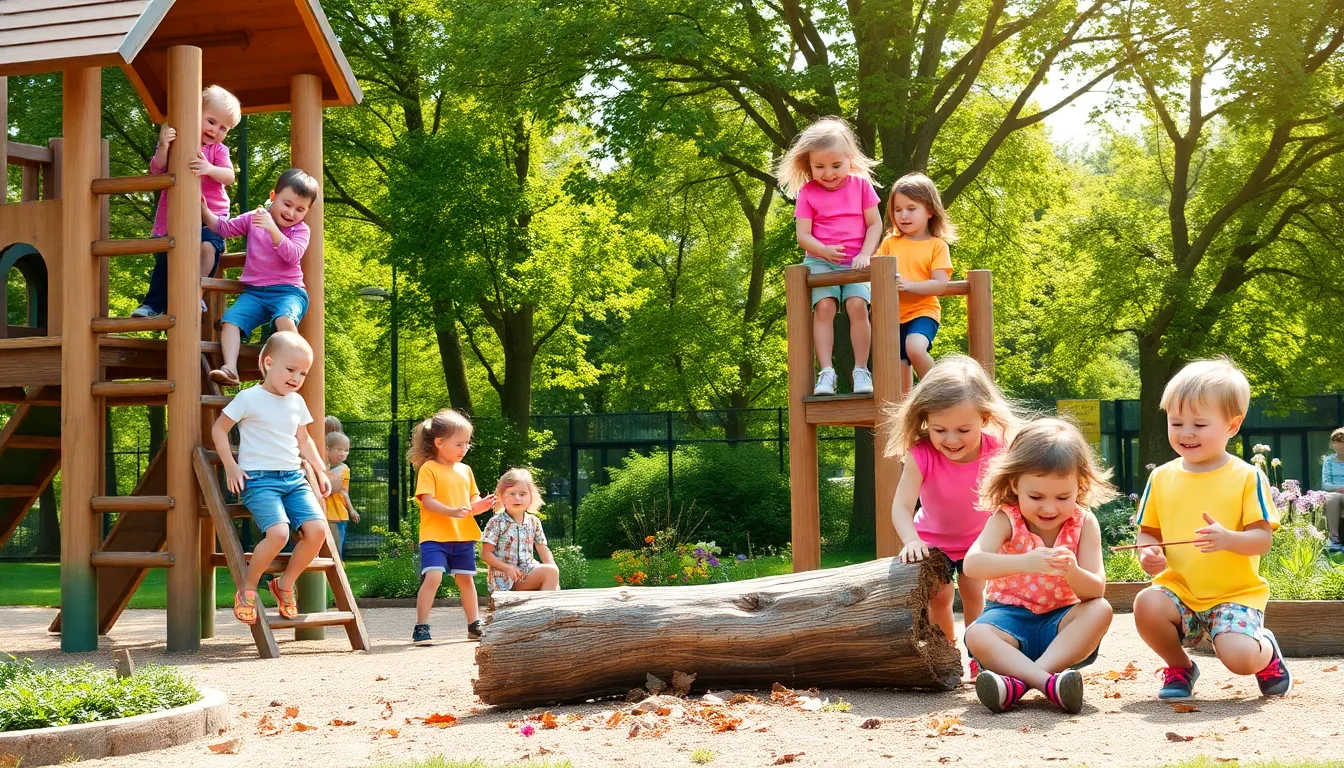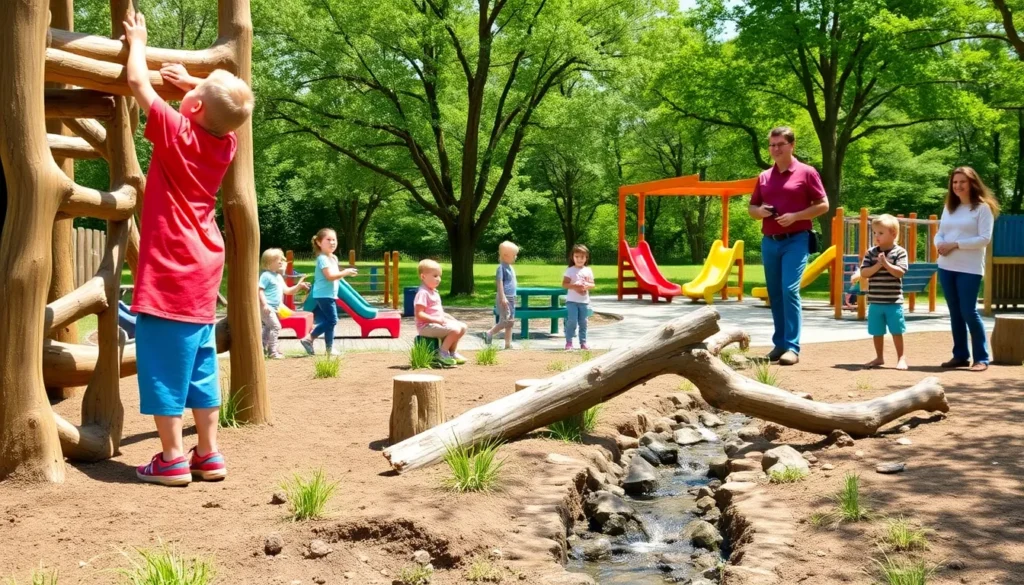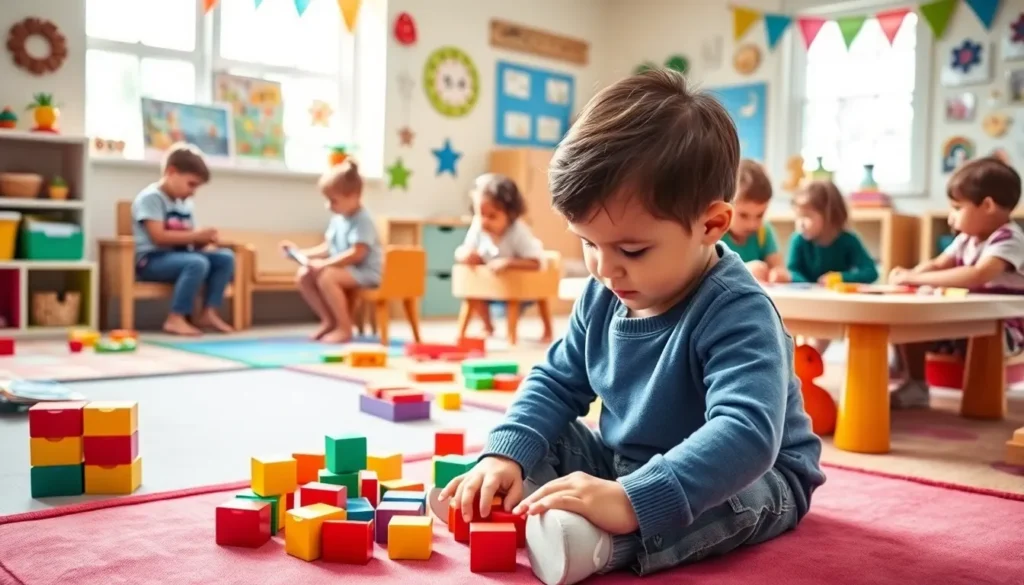When it comes to early childhood development, outdoor play spaces are the rock stars of learning. Imagine a world where kids get their hands dirty, breathe in fresh air, and discover the wonders of nature, all while having a blast. In this age of screens and structured activities, it’s vital for young children to experience unstructured outdoor play. So, grab your sunscreen and let’s jump into why these spaces are essential, how to design them effectively, and what best practices can elevate outdoor play into a transformative experience.
Table of Contents
ToggleImportance of Outdoor Play for Young Children

Physical Development Benefits
Outdoor play is not just fun and games: it plays a crucial role in a child’s physical development. Running, jumping, climbing, and playing not only strengthen muscles but also enhance coordination and balance. When children engage in outdoor activities, they’re honing their fine and gross motor skills. Think of climbing a tree or balancing on a log: it’s a mini workout that’s practical and exhilarating. Studies show that kids who spend more time outdoors are often healthier and more active, setting the foundation for a lifetime of fitness.
Social and Emotional Growth
Emotional intelligence can flourish in outdoor settings. Unstructured play allows children to interact freely with one another, learn to share, and solve conflicts. These experiences help them develop empathy and communication skills. Remember, it’s not just about making friends: it’s about learning how to navigate the world around them. Plus, who doesn’t feel a bit more confident after successfully navigating a playground adventure?
Cognitive Benefits of Nature Play
Nature is an inspiring classroom. Outdoor play sparks curiosity, leading to countless learning opportunities. Children encounter various textures, colors, and sounds, stimulating their imagination and cognitive skills. They learn problem-solving as they figure out how to construct a fort with branches or build a dam with rocks. The great outdoors is indeed a treasure trove of knowledge, just waiting to be explored.
Designing Effective Outdoor Play Spaces
Key Elements of a Successful Play Area
To create an engaging outdoor play space, key elements must be considered. Accessibility is crucial, ensuring that all children can enjoy the area, regardless of their abilities. Include a variety of play equipment that caters to different age groups and promotes diverse activities. From slides and swings to climbing walls, variety keeps children excited and engaged. Consider zones, such as quiet areas for reflection and active zones for physical play, to cater to different play needs.
Incorporating Natural Elements
Integrating natural elements into play spaces offers children a rich experience unlike any manufactured play equipment. Natural materials like logs, rocks, and water features can stimulate creativity and imaginative play. They provide the perfect backdrop for storytelling, exploration, and adventure. Imagine a tree stump turning into a pirate ship or a stream providing the backdrop for a treasure hunt. Nature enhances children’s play experiences, making them not only more enjoyable but also educational.
Safety Considerations for Outdoor Play Areas
Safety is paramount when designing outdoor play areas. Soft surfaces such as mulch or rubber can reduce the risk of injury from falls. Regular maintenance is critical to ensure that play equipment remains in good condition and free from hazards. Parents and educators should be educated about supervising children effectively while still allowing them the freedom to explore. The balance between safety and exploration is essential for fostering independence.
Examples of Inspiring Outdoor Play Spaces
Community-Based Initiatives
Across the nation, communities are rethinking outdoor play. Initiatives like community gardens and nature trails engage families and children while emphasizing the importance of nature. For instance, some cities have transformed abandoned lots into vibrant play spaces filled with greenery, art installations, and natural play equipment. These community-driven projects nurture social bonds and revive local ecosystems while offering children engaging environments to explore.
Innovative Schools and Childcare Centers
Many forward-thinking schools and childcare centers are embracing outdoor learning. Nature-based preschool programs that incorporate outdoor classrooms allow children to learn core subjects while exploring the natural world. Concepts are taught through hands-on experiences, children might learn math by counting leaves or biology through insect observation. Schools that have embraced these innovative outdoor play spaces report increased student engagement and overall happiness.
Best Practices for Using Outdoor Play Spaces
Encouraging Parental Involvement
Parental involvement is crucial for maximizing the benefits of outdoor play spaces. Encouraging parents to join their children outdoors not only enhances the play experience but also strengthens family bonds. Organizing community playdays or workshops can help parents feel more connected to their child’s outdoor play, supporting a culture that values physical activity and interaction with nature.
Integrating Outdoor Activities into Curriculum
Leveraging outdoor play as part of the curriculum is a best practice that enhances learning. When educators incorporate nature walks, outdoor science experiments, or even art sessions in gardens, children benefit from a dynamic learning experience. Engaging with nature helps concepts resonate more deeply and encourages curiosity, a winning combination for any educational approach.




